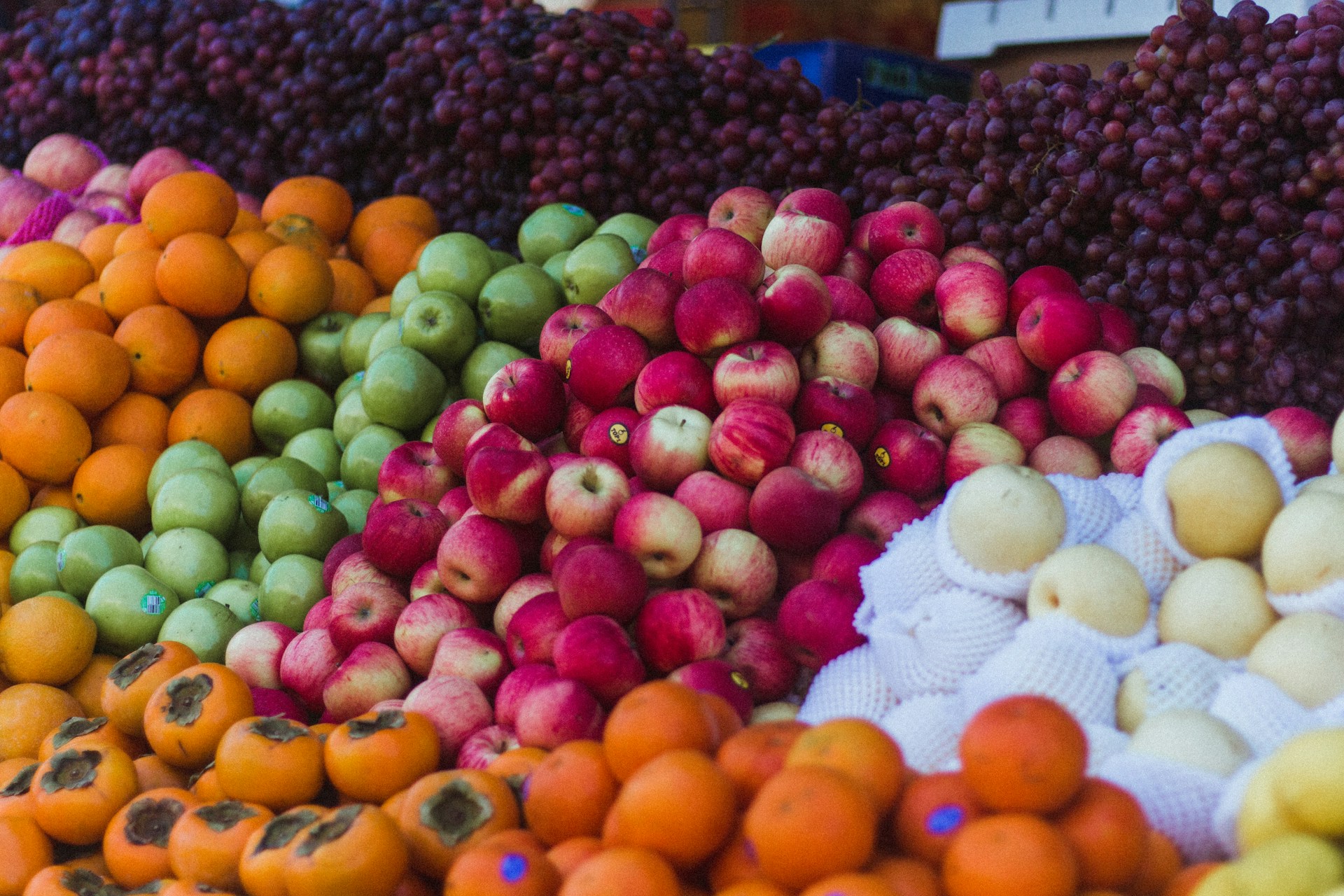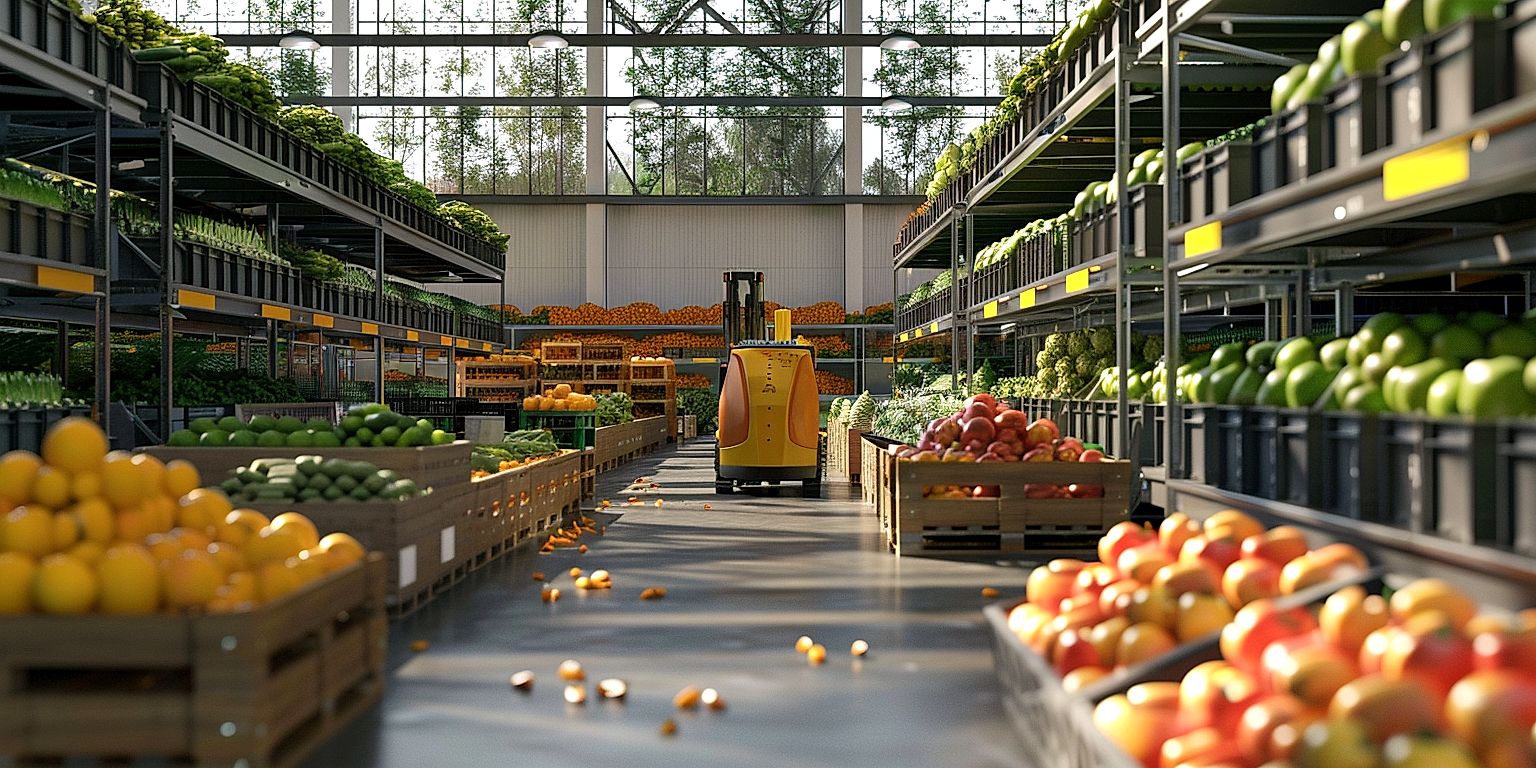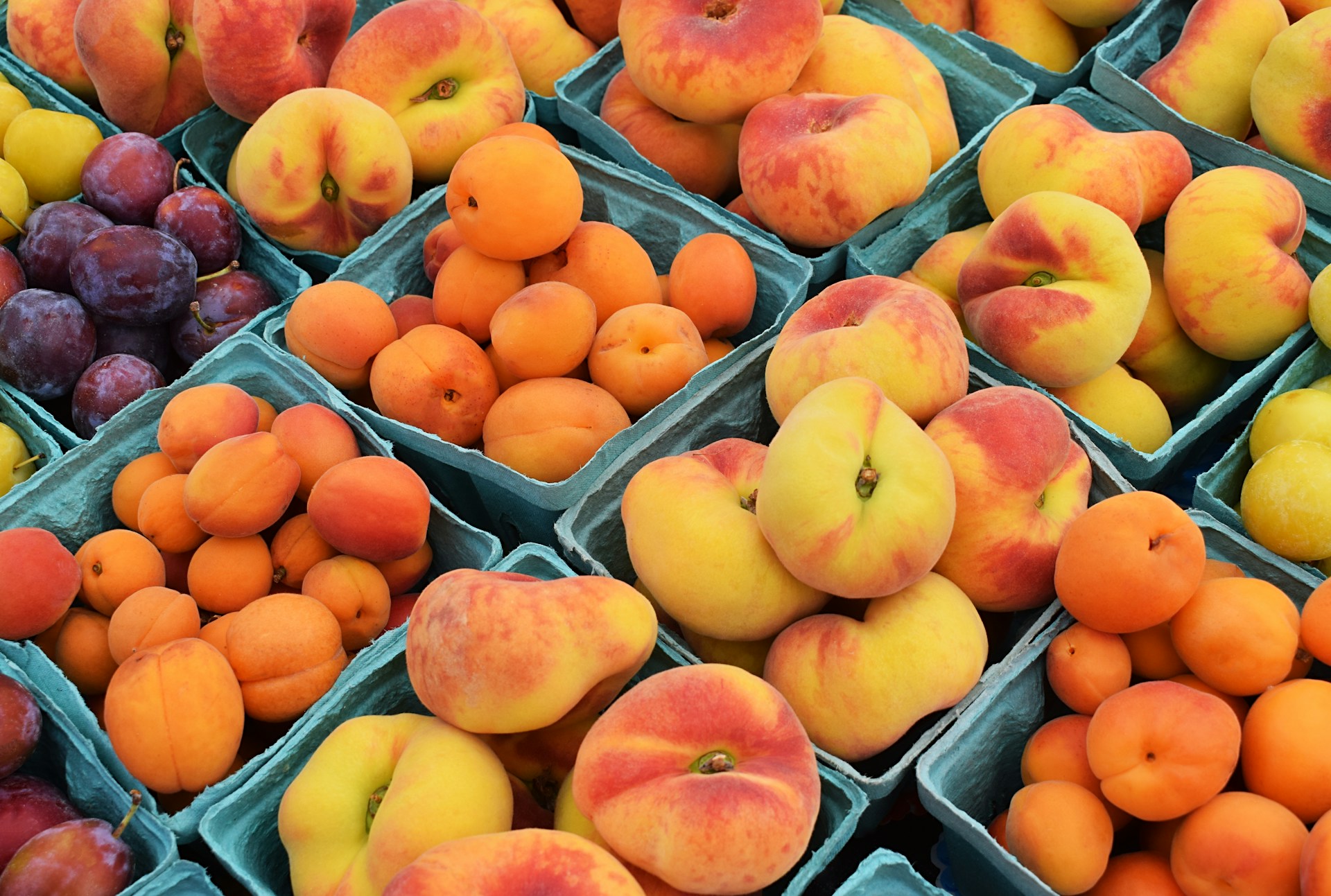In today’s global economy, sustainable practices are more critical than ever.
In particular, the produce distribution sector holds significant potential for incorporating eco-friendly strategies.
The majority of enterprises in this sector are faced with the crucial challenge of balancing environmental responsibility with business efficiency.
As such, the implementation of green logistics has emerged as an imperative solution.
This involves redefining traditional supply chain strategies.
We aim to delve into detailed recommendations to aid your transition towards sustainability in your produce distribution process.
Contents
- Steps To Implement Green Logistics In Produce Distribution
- 1. Conduct thorough environmental impact assessment.
- 2. Research and Adopt Green Packaging Methods.
- 3. Identify eco-friendly transportation alternatives
- 4. Optimize Route Planning for Fuel Efficiency
- 5. Implement Energy-Efficient Warehouse Management
- 6. Reduce, Reuse, Recycle in Supply Chain
- 7. Introduce Carbon Offsetting Initiatives
- 8. Ensure Effective Waste Management Systems
- 9. Provide green procurement training for staff
- 10. Regularly monitor and improve sustainability practices.
- The Bottom Line
Steps To Implement Green Logistics In Produce Distribution
1. Conduct thorough environmental impact assessment.
Introducing green logistics in produce distribution begins with an essential step: conducting a thorough environmental impact assessment.
An environmental impact assessment (EIA) is a systematic process of identifying the potential environmental effects of a proposed action or initiative.
This generally includes an evaluation of both the direct and indirect consequences, such as pollution levels, on the earth’s natural resources.
Before implementing green logistics in your produce distribution, it is crucial to understand the current environmental impact of your operations.
An EIA can provide insights on key areas such as waste generation, energy consumption, emissions, and water usage, to name a few.
Performing an EIA not only provides a baseline from which you can measure improvements, but also identifies potential environmental risks and opportunities for environmental performance enhancements.
An EIA is typically conducted by environmental experts and involves data gathering and analysis, field surveys, consultation with stakeholders, and the development of mitigation strategies.
These strategies can include measures to reduce environmental damage and improve the efficiency of operations and product handling.
The results of the EIA can be used to formulate a strategic action plan for the implementation of green logistics in your produce distribution.
Consider employing third-party validation to ensure that your EIA’s findings and recommendations are sound and objective.
Keep in mind, even when green logistics are implemented, it’s important to conduct regular EIAs to track progress and make necessary adjustments.
Remember, the goal is not only to reduce your environmental impact, but also to create more efficient and cost-effective distribution processes.
With tangible data from an EIA, companies can devise a clear and effective strategy to implement green logistics in their produce distribution efforts.
However, an EIA should not be a one-time event, but rather the beginning of continuous environmental management and sustainable development.
By conducting comprehensive EIAs regularly, businesses can stay ahead of regulatory changes and be proactive in reducing their environmental footprint.
2. Research and Adopt Green Packaging Methods.
As one of the critical elements in the environmentally sustainable supply chain, green packaging has emerged as a significant area of focus within the logistics industry.
Companies in the produce distribution sector must deeply understand the benefits and implications of shifting towards green packaging solutions.
Consequently, it requires thorough research on best packaging practices that minimize environmental impacts.
Green packaging encompasses the utilization of materials that are biodegradable, reusable, and recyclable.
The goal is to reduce the waste attributed to the packaging process often in the form of plastics and non-recyclable materials.
This shift not only benefits the environment but also enhances the image of the company as conscious and responsible towards environmental health.
While adopting green packaging methods, it is important to ensure that they align well with the company’s overall sustainability strategy.
It also transcends beyond just choosing the right packaging materials but also invloves introducing efficient packaging processes.
These methods can include reducing the volume of packaging, using innovative packaging designs that requires less material, and encouraging suppliers to adopt similar practices.
A significant step in adopting green packaging is to engage with suppliers and manufacturers that are committed to sustainability and can provide eco-friendly packaging solutions.
Green packaging might seem like an expensive shift initially, but in the long run, it often results in cost savings due to reduced waste management and potential reduction in transportation cost due to lighter packaging.
Another potential strategy is to incentivize consumers to return packaging for reuse, substantially reducing the amount of new packaging material needed.
Sourcing sustainably-produced packaging materials further ensures that the entire lifecycle of the packaging is environmentally friendly.
Closer collaboration with key stakeholders, including customers, can lead to innovative ideas on creating and implementing more sustainable packaging solutions.
Thus, a thorough exploration of green packaging methods can help the produce distribution industry significantly reduce its environmental impact while reaping benefits like cost savings, improved brand image, and greater stakeholder engagement.
This change indicates how crucial it is for companies in the sector to seriously consider incorporating green packaging strategies into their logistics practices.
3. Identify eco-friendly transportation alternatives
Focusing on eco-friendly transportation alternatives is a significant step in transitioning towards green logistics in produce distribution.
To efficiently distribute products while minimizing environmental impact, it is crucial to consider utilizing low-emission vehicles.
These vehicles, powered by cleaner fuels such as electricity, hydrogen, or biofuels, emit significantly fewer pollutants compared to conventional diesel or petrol-powered vehicles.
Electric and hybrid vehicles are growing trends in the logistics industry, aiming to minimize carbon footprint while ensuring operational efficiency.
Moreover, companies can consider transitioning to renewable energy-powered vessels for maritime freight, enhancing green logistics in produce distribution.
Enhancing energy efficiency in transportation and distribution operations is another eco-friendly strategy.
This can be achieved through route optimization and load optimization, ensuring vehicles operate at maximum efficiency, minimizing fuel consumption and emissions.
Produce distribution companies can also consider intermodal transportation, which involves using two or more modes of transport.
This method is particularly relevant when distributing goods across long distances, as it provides greater efficiency and reduced carbon emissions compared to relying solely on road transportation.
Another effective strategy is to partner with service providers who share a commitment to environmental sustainability.
This includes companies that provide transportation services using eco-friendly vehicles or renewable energy sources.
Furthermore, there’s an increase in the exploration and integration of innovative transportation alternatives, such as drones and autonomous vehicles.
While these technologies are still developing, they present potential for greater efficiency and reduced environmental impact in the future, enhancing the drive towards green logistics in produce distribution.
It’s important for companies to annually assess and update their transportation strategies, taking into consideration recent advancements and changes in environmental regulations.
By doing so, they can continuously improve their performance in sustainable logistics, contributing to the broader goal of environmental protection and sustainability.
4. Optimize Route Planning for Fuel Efficiency
The transportation segment of the supply chain is a significant contributor to greenhouse gas emissions, hence the need for route optimization in produce distribution.
One should initiate the implementation of tools and technologies that can provide the most efficient routes in terms of fuel consumption.
These tools would take into consideration variables such as the distance, carrying capacity of the vehicle, and road conditions to help plan the most efficient route.
The optimization of route planning is not just about reducing the distance, but also improving the loading capabilities of transport vehicles.
Optimized loading can lead to fewer trips, thus using less fuel and emitting fewer pollutants to the environment.
An understanding of the relationship between load weight and fuel consumption is crucial in achieving route optimization.
To avoid empty return trips, a distribution network should be designed with opportunities for roundtrip loadings.
Another vital factor that impacts fuel efficiency is the driver’s behavior.
Practices like aggressive driving, frequent acceleration and deceleration, and unnecessary idling all lead to higher fuel consumption.
However, implementing driver training programs that stress on efficient driving techniques can significantly improve fuel efficiency.
Moreover, continual monitoring and direct feedback have been proven to play essential roles in influencing a driver’s driving habits.
Additionally, conducting regular maintenance on delivery vehicles is pivotal to ensure their optimal performance.
Well maintained vehicles generally offer better fuel efficiency and have a relatively lower carbon footprint.
The choice of vehicle itself also has a significant impact on fuel efficiency.
Investing in advanced vehicles with higher fuel efficiency or even hybrid and electric vehicles can reduce fuel consumption and improve overall transport sustainability.
Ultimately, optimized route planning and an energy-efficient transport strategy play a vital role in the implementation of green logistics within a produce distribution network.
5. Implement Energy-Efficient Warehouse Management
Energy efficiency is a fundamental aspect of green logistics, and a key area of focus within this is warehouse management.
In the context of produce distribution, warehouses act as vital nodes in the supply chain, handling the storage, sorting, and dispatch of agricultural goods.
However, they are often significant consumers of energy, with electricity needed for lighting, refrigeration, and operating machinery.
As such, implementing energy-efficient strategies within these environments can significantly contribute to greening a business’ overall logistics process.
By making warehouses more energy-efficient, a business can not only reduce its environmental impact, but also achieve cost savings.
One approach is to invest in energy-efficient equipment, such as LED lighting and high-efficiency refrigeration systems.
Other measures include optimizing warehouse layouts to minimize the need for energy-consuming equipment and using energy management software to monitor and control energy consumption.
Many companies are also exploring the use of on-site renewable energy sources, such as solar panels, to power their warehouses.
Through these strategies, warehouses can function as ‘green hubs’, contributing to the sustainability objectives of the broader supply chain.
Moreover, energy-efficient warehousing can also have benefits in terms of business image.
Companies that demonstrate a commitment to environmentally friendly practices can gain a competitive edge, enhancing their reputation amongst consumers and stakeholders, and potentially attracting more business.
To drive these changes, it’s important for companies to set clear, measurable goals for reducing energy consumption and to continually monitor their progress in meeting these targets.
This might involve carrying out regular audits of energy use, looking for trends and patterns, and identifying opportunities for further improvement.
Training is also crucial to ensure that all staff understand the importance of energy efficiency and how they can contribute to achieving it.
Education programs can help employees understand the impacts of their actions, and foster a culture of environmental responsibility within the warehouse.
Importantly, achieving energy efficiency in warehouse management generally requires a comprehensive approach that looks at all aspects of warehouse operations, including layout and design, equipment selection, maintenance practices, employee behavior, and energy management systems.
6. Reduce, Reuse, Recycle in Supply Chain
In our quest for implementing green logistics in produce distribution, it is vital that we take into account the traditional environmental mantra of reduce, reuse, recycle.
Principally, the concept of reduce calls for us to limit the amount of resources we consume while accomplishing our tasks.
This could mean, for instance, reducing the amount of fuel utilized by optimizing distribution routes or lowering the quantity of materials used in packaging.
Furthermore, reducing waste generation is another effective step, which can be achieved by improving our use of raw materials and reducing the general amount of refuse we produce.
The element of reuse in our supply chain prompts us to embrace strategies that allow for the repeated use of materials and resources.
This could involve adopting reusable packaging materials or regular routine maintenance of equipment to enhance their longevity and prevent early replacements.
Essentially, embracing the concept of reuse can significantly cut back on waste production and reduce the demand for new resources.
Finally, the principle of recycle urges us to convert waste materials back into reusable resources.
Proper recycling practices not only reduce the pressure on landfills but also cut back on the demand for new materials.
For example, used packaging materials can be recycled into new ones, and organic wastes can be turned into compost.
Every business involved in produce distribution has the potential to contribute to environmental preservation through effective management and implementation of the reduce, reuse, recycle concept.
Promote these three principles and strategies to your vendors, consumers, employees, and other stakeholders and involve them in your green logistics campaign.
Managing waste in your supply chain by reducing, reusing, and recycling is not just about preserving the environment, it is also likely to result in significant cost savings in the long run.
While implementing these concepts might initially pose some challenges, the benefits – both environmental and financial – are well worth it.
Ultimately, the integration of the reduce, reuse, recycle mantra in your supply chain places your produce distribution business on the right path to achieving green logistics.
7. Introduce Carbon Offsetting Initiatives
The integration of carbon offsetting initiatives into a company’s operation is a crucial step in implementing green logistics in produce distribution.
These initiatives involve the company compensating for their carbon emissions by either financing or participating in projects that reduce carbon emissions elsewhere.
This process directly addresses one of the key contributors to environmental degradation – greenhouse gas emissions brought about by the company’s logistical operations.
Carbon offsetting initiatives, therefore, play a significant role in decreasing the overall carbon footprint of the supply chain by balancing out the greenhouse gas emissions that cannot be avoided or reduced.
They offer a practical solution for companies to continue operating while actively contributing to the global fight against climate change.
Certain sectors in the production distribution process, such as transportation and storage, are notorious for their high carbon emissions due to the constant use of fossil fuels.
Opting for carbon offset initiatives, such as investing in renewable energy projects or reforestation can counterbalance these emissions effectively.
For instance, a company can offset the emissions produced by its delivery trucks by funding wind or solar energy projects.
Other practical examples of carbon offsetting initiatives include methane capture projects and planting trees which naturally absorb and store carbon dioxide from the atmosphere.
Taking part in these initiatives not only contributes to the overall reduction of greenhouse gas emissions but also aids in the restoration and preservation of the planet’s natural resources.
Companies also benefit from introducing carbon offsetting initiatives as this could enhance their corporate image and secure customer loyalty.
Implementing carbon offsetting initiatives sends a clear message to stakeholders that the company is committed to sustainable practices.
Moreover, carbon offsetting is a powerful tool that helps companies meet their corporate social responsibility goals.
Investing in carbon offset projects not only helps the environment but can also offer financial returns in the form of carbon credits.
However, the success of such initiatives relies heavily on transparency and good governance.
Companies should ensure that their carbon offset projects are independently audited and verified to maintain credibility.
8. Ensure Effective Waste Management Systems
When implementing green logistics in produce distribution, the eighth critical step involves ensuring effective waste management systems.
As a distributor, your company generates various forms of waste at every phase of operations.
This clutter includes discarded product packaging, unwanted or spoiled produce, and regular office trash.
Effective waste management is pivotal, not just for maintaining sanitary working conditions, but also for environmental protection.
Thus, it is vital to devise and implement a system that reduces waste, reuses resources, and recycles waste materials where possible.
Effective waste management systems are not only beneficial to the environment but can also lead to significant cost savings for your business.
Start by performing a comprehensive waste audit to establish the types and quantities of waste your company produces.
This data aids in identifying areas where you can reduce waste generation and potential recycling opportunities.
Your company should also explore methods of converting waste into reusable resources through processes including composting or anaerobic digestion.
For instance, any bruised or unsold fruit and vegetables can be composted and used as organic fertilizer instead of ending up in a landfill.
Your company can further optimize waste management by segregating waste at the source.
This separation simplifies the processes of recycling, composting, and disposing as each type of waste requires specific handling.
It will be more manageable to deal with glass, plastic, metal, and cardboard separately than if it is all mixed up.
Aside from normal day-to-day waste, consider other ways to recyle or dispose of other waste such as worn-out equipment or vehicles.
Adopting these practices helps your business become more sustainable and contributes to the overall goal of green logistics.
Additionally, enhanced waste management systems align with a company’s social responsibilities, bolstering its reputation among customers, suppliers, and other stakeholders.
Remember, maintaining an effective waste management system requires regular monitoring and adjustment to ensure ongoing efficiency and positive environmental impact.
9. Provide green procurement training for staff
The transition towards green logistics in produce distribution requires an encompassing approach that includes not only technological and procedural changes, but also a change in mindset, especially in staff involved in procurement processes.
To facilitate this shift, it’s important to carry out green procurement training for staff.
This training ought to be comprehensive and cover areas such as understanding environmental impacts, recognizing green products and suppliers, and appreciating the benefits and challenges of sustainable procurement.
The aim of this training would ideally be to turn every employee into a knowledgeable and responsible customer.
Equipping staff with a comprehensive understanding of the environment and the role procurement plays in it can result in more conscious purchasing choices.
Training programs should be regularly updated and enhanced to reflect the latest sustainable procurement practices and standards.
An important aspect to cover in training is the use of ecolabels and how to interpret them correctly, as they are commonly used in green procurement.
Furthermore, staff ought to be trained on how to evaluate available products and suppliers against key environmental, ethical, and social criteria.
This involves demonstrating a good grasp of the life-cycle analysis concept that takes into account the full environmental impact of a product, from raw material extraction to disposal.
Learning how to maintain transparency in the procurement process and working with suppliers to reduce their environmental footprints are other key aspects that staff should be trained in.
Besides the technical aspects, the training should also focus on nurturing a culture of sustainability within the organization that promotes proactive green behavior.
Green procurement training can enhance staff’s ability to not only make sound purchasing decisions, but also contribute to the company’s overall sustainability strategy.
It can also provide an opportunity for staff to share their ideas and inputs for improving green logistics practices within their areas of operation.
A well-planned and executed green procurement training program can be instrumental in driving a produce distribution company’s green logistics efforts.
Remember that the success of such a training program largely depends on the commitment from the top management and willingness of the staff to embrace and practice sustainable procurement.
10. Regularly monitor and improve sustainability practices.
Implementing green logistics in produce distribution is not a one-time event, but a continuous process of monitoring and improving sustainability practices.
Real-time data and monitoring tools can be employed to gain visibility into different aspects of the supply chain such as energy consumption, waste generated, and greenhouse gases emitted.
Incorporating real-time data analysis into your logistics strategy allows you to track the effectiveness of your sustainability efforts, identify areas for improvement, and make informed decisions to enhance your green initiatives.
It creates a system of regular auditing to ensure that your green initiatives are being implemented effectively and efficiently.
You can measure the success of your sustainability initiatives by tracking key performance indicators (KPIs) such as reduction in carbon footprint, reduction in fuel consumption, and increase in recycling rates, amongst others.
Regular, consistent monitoring ensures that your green initiatives stay on course and continue to improve.
Moreover, it facilitates the identification of new opportunities for innovation, enabling your operations to become even more eco-friendly and potentially more cost-effective.
It is equally important to communicate your green achievements internally and externally.
Transparent communication helps to keep all stakeholders informed about the company’s sustainability efforts, allows for recognition of improvements, encourages further eco-friendly behavior and fosters a company culture of sustainability.
Sharing your sustainability progress externally can boost your company’s reputation and can differentiate your brand in an increasingly eco-conscious marketplace.
Keep in mind that the monitoring process is not about perfection but about progress – small, incremental improvements can have a huge cumulative impact over time.
Learning from failures or shortcomings and using them as a springboard for growth is an integral part of the process.
A key aspect of continuous monitoring and improvement is the need to be adaptable and flexible, as sustainability is a diverse and evolving field.
Finally, always look for opportunities to collaborate and share best practices with other organizations in the produce distribution industry.
By doing so, not only can you learn from their experiences and insights, but you can contribute to broader, industry-wide improvements in green logistics.
The Bottom Line
As we strive for sustainable operations within the field of logistics and supply chain management, several measures essential to mitigating environmental impact have been identified.
Emphasizing the necessity of conducting thorough environmental assessments, adopting green packaging, and sourcing eco-friendly transport alternatives are all contributing factors to this cause.
Additionally, optimizing routes for fuel efficiency, managing a greener warehouse, introducing carbon offsetting, and maintaining effective waste management systems are key.
Ensaculating these practices involves the training of staff in green procurement and a continual commitment to monitor and improve sustainability practices.
Vindicating for such a holistic and comprehensive approach is not an option but an imperative in creating a future where businesses not only thrive, but also promote environmental resilience and sustainability.




